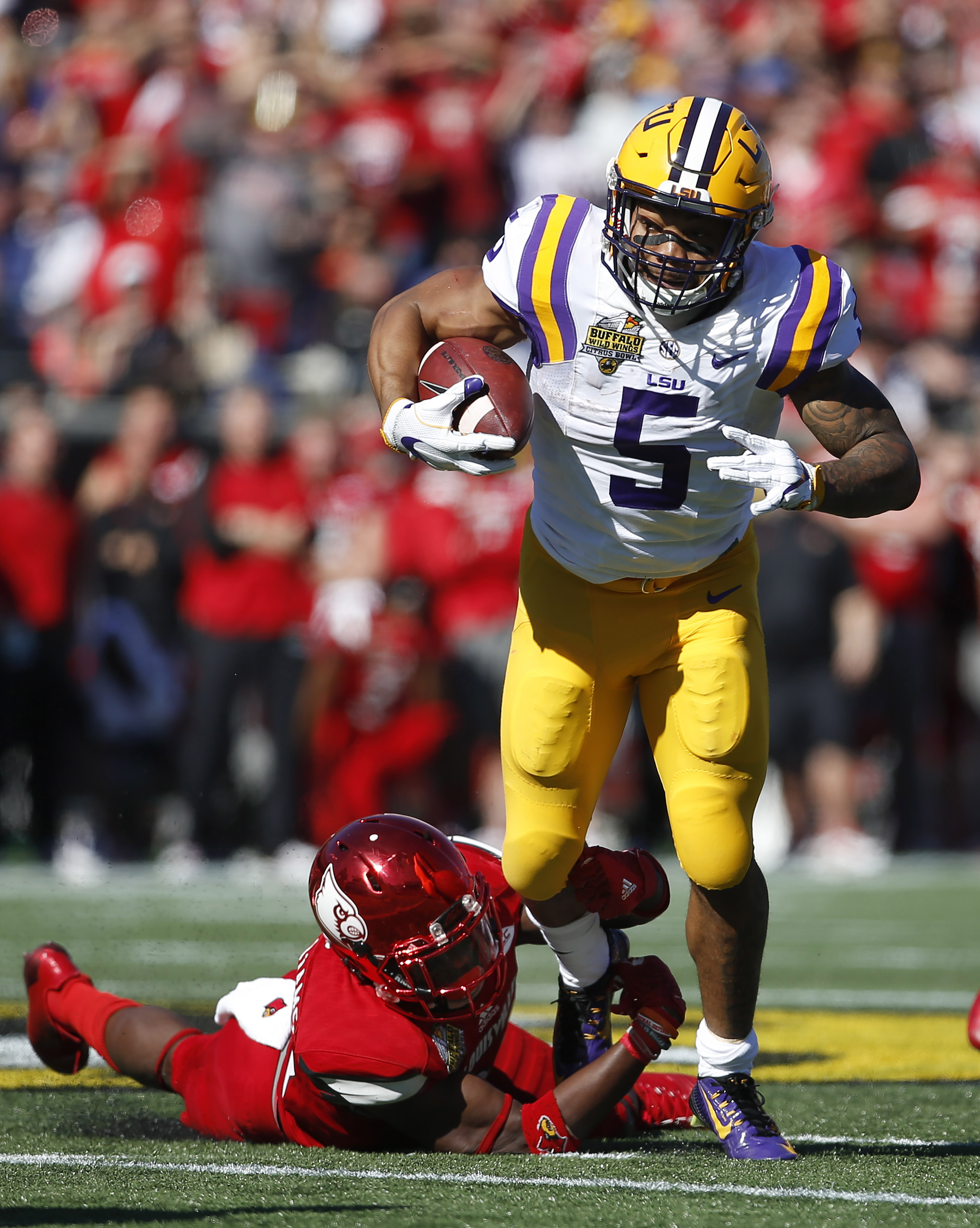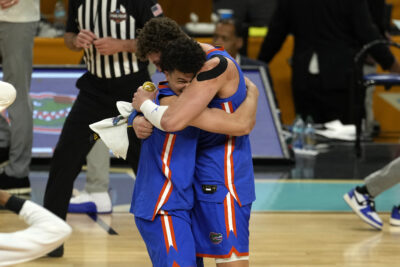
Alabama—Ronnie Harrison, S
Harrison played mostly off the bench as a freshman, making 17 tackles. But as a sophomore, in 2016, he was second on the team with 86 stops, and his seven pass break-ups were near the top of the team leaderboard. Harrison will look to continue his steady play in the defense backfield in 2017.
Arkansas—Rawleigh Williams, RB
Williams was a decent player in 2015, rushing for 254 yards in relief of Alex Collins. But in 2016, with Collins gone, he exploded to 1,360 yards and 12 touchdowns on the ground. Williams’s 5.6 yards per carry far eclipsed Arkansas’s 4.1 yards per attempt as a team.
Auburn—Kamryn Pettway, RB
Carl Lawson would have won this award for most teams. But most teams didn’t watch Pettway go from a season with no carries to 1,224 rushing yards and seven touchdowns. Had he stayed healthy, Pettway would have done even more damage. His future is unquestionably bright.
LSU—Derrius Guice, RB
It wasn’t really that there was anything wrong with Guice before. He averaged 8.5 yards per carry in 2015, but was stuck behind Leonard Fournette. In 2016, Guice was so good that LSU couldn’t sit him. He ended up with 1,387 rushing yards and 15 touchdowns — a good enough season that many could ask “Leonard Who?” There’s no question who will be the man in the Tigers’ backfield in 2017.
Mississippi—Zedrick Woods, S
After a rash of injuries, Woods, who started twice and had 25 tackles as a freshman, was pressed into service in 2016. He ended up second on the team in tackles with 63 and broke up six passes, including three interceptions, one of which he returned for a touchdown. Woods will look to key an improved Rebels defense in 2017.
Mississippi State—Nick Fitzgerald, QB
Sure, whoever won the QB job would put up some numbers. But Fitzgerald, who passed for 235 yards and rushed for 127 more off the bench in 2015, exceeded expectations. He ended up throwing for 2,423 yards with 21 touchdowns against 10 interceptions. But on the ground, he truly shone, adding 1,375 rushing yards and 16 touchdowns. Even Dak Prescott wasn’t posting stats like that.
Texas A&M—Otaro Alaka, LB
Alaka missed most of 2015, making 12 tackles in the three games he played in. In 2016, he was very much present, ending up with 74 stops, including nine tackles for loss. If the Aggies want to avoid another late-season swoon, they’ll need a big 2017 from Alaka.
Florida—Jordan Scarlett, RB
Scarlett was fine as a freshman, managing 181 yards in limited time behind Kelvin Taylor. But he was expected to be jumped on the depth chart by Mark Thompson or Jordan Cronkrite or even Lamical Perine. Scarlett quietly ended up with 889 yards rushing and six touchdowns — and his 5.0 yards per carry was well ahead of his team’s 3.5-yard average.
Georgia—Isaiah McKenzie, WR
McKenzie had showed game-breaking speed as a kick returner in his first two years at UGA, but he had caught just 16 passes. In 2016, he became Georgia’s big-play threat, with 44 catches for 633 yards and seven scores. In fact, McKenzie was so good that he went from barely contributing at receiver to an early NFL draft entrant.
Kentucky—Josh Allen, LB
Kentucky needed to amp up its pass rush in 2016, and Allen provided some punch in that role. He had just four tackles as a freshman in 2015, but improved to 62 tackles in 2016 and led the Wildcats with seven sacks and four fumbles forced. Allen will be a junior in 2017.
Missouri—Drew Lock, QB
Missouri was high on Lock in 2015, and when Maty Mauk was cut loose, the freshman played. That said, he was a 49-percent passer who threw four touchdowns and eight interceptions. But in 2016, Lock threw for 3,399 yards, 23 touchdowns and only 10 interceptions. While Lock had his struggles, he was drastically improved as a sophomore.
South Carolina—Hayden Hurst, TE
Hurst was a minor-league baseball player, and nabbed eight passes in 2015. In his sophomore season, he became one of the top tight ends in the SEC, catching 48 passes for 616 yards. Receiving threats Deebo Samuel and Bryan Edwards should allow Hurst room to make plays in the middle for the next year or two for USC.
Tennessee—Jauan Jennings, WR
Jennings showed potential in 2015, starting six games, but ended up with just 14 catches for 149 yards. In 2016, he improved to 40 grabs for 580 yards and seven touchdowns — including the unforgettable Hail Mary game-winner against Georgia. With Josh Malone gone, Jennings may be even better next year.
Vanderbilt—LaDarius Wiley, S
Wiley barely contributed in 2015, totaling just eight tackles. But in 2016, he was second on the Commodores in stops with 76, and also broke up four passes and forced two fumbles. With his one remaining season at Vandy, Wiley will look to build off his significant improvement.
Joe Cox is a columnist for Saturday Down South. He has also written or assisted in writing five books, and his most recent, Almost Perfect (a study of baseball pitchers’ near-miss attempts at perfect games), is available on Amazon or at many local bookstores.





